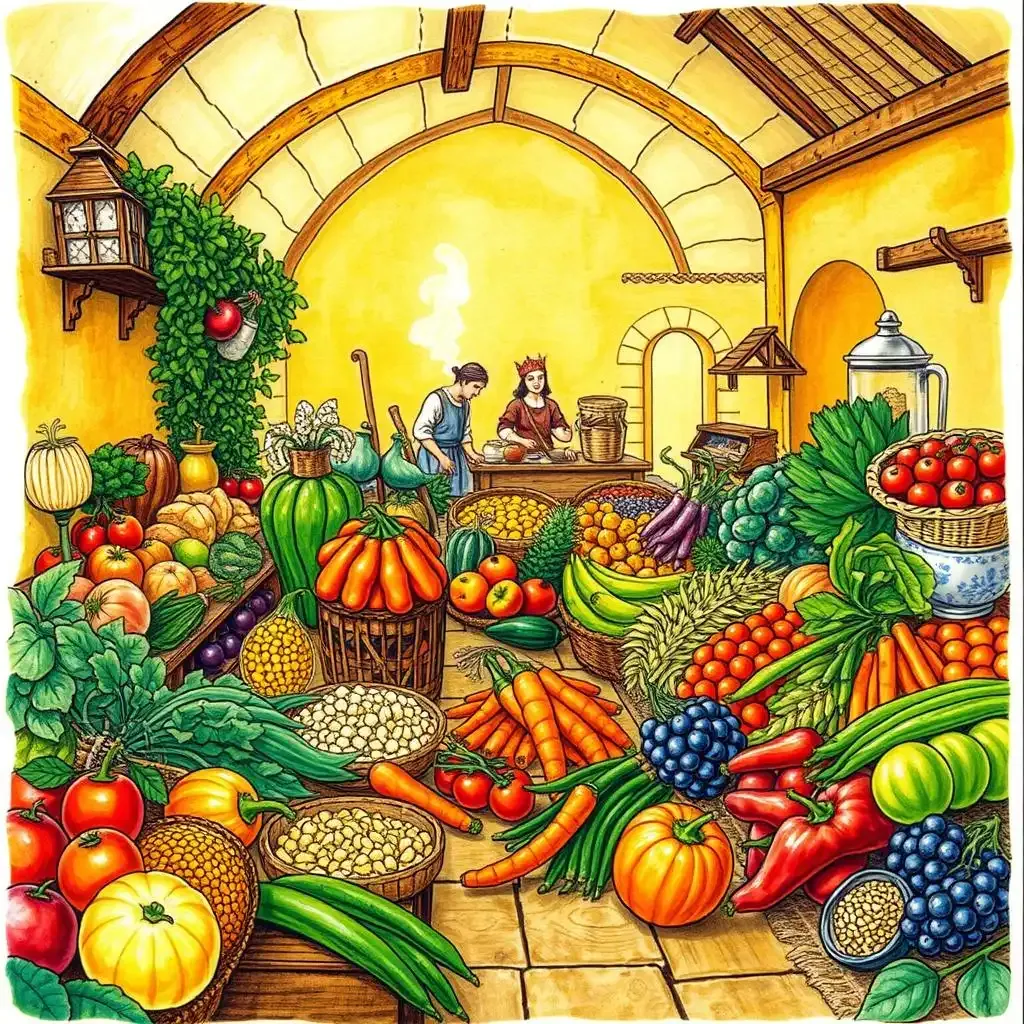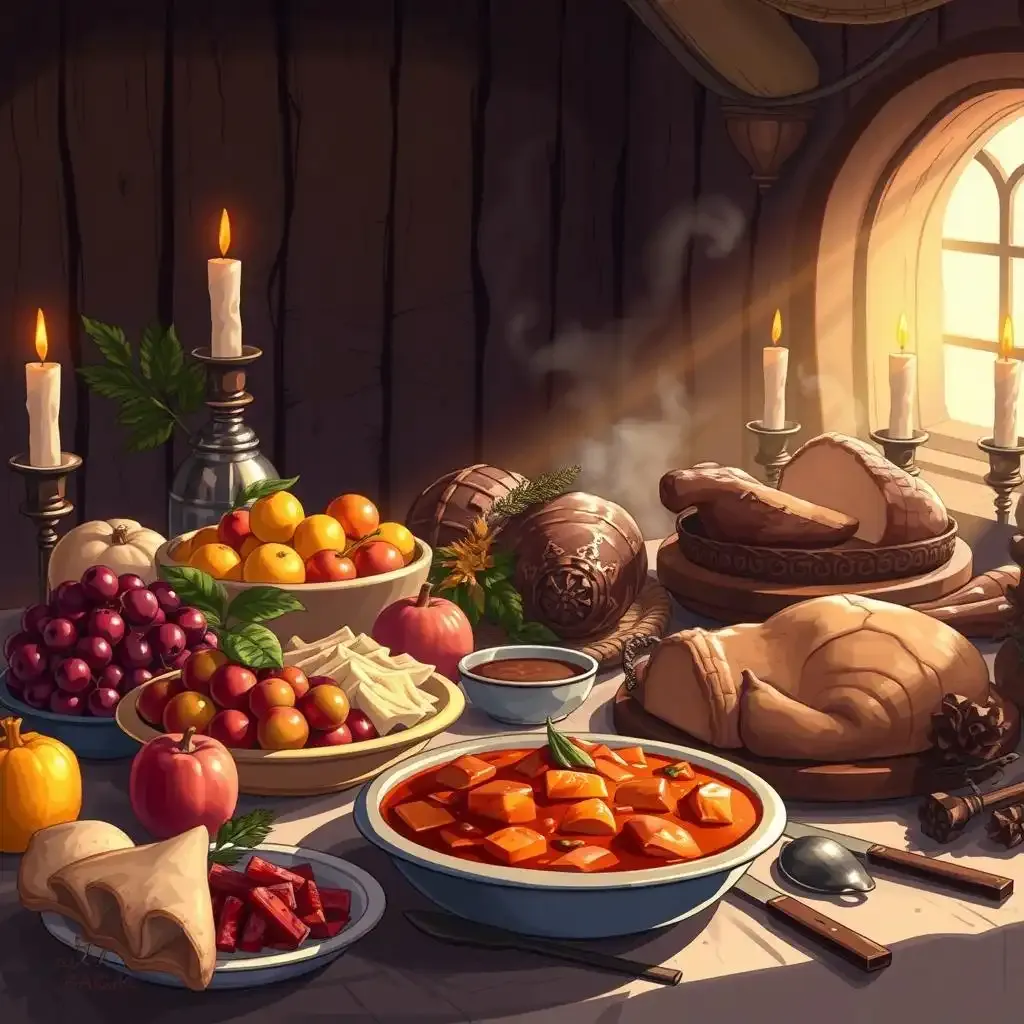Table of Contents
Ever wondered what people ate in the Middle Ages? Many imagine bland gruel and rotting vegetables. But was medieval food *really* that bad? At tauhuichiban, we're diving into the fascinating world of medieval cuisine to uncover the truth. This article will explore the reality of medieval food, debunking common myths and showing you that the culinary landscape of the Middle Ages was far more diverse and, dare we say, delicious than you might think! We'll examine what different social classes ate, how food preparation differed across regions, and even look at some surprisingly tasty recipes that have survived the centuries. Get ready to rewrite your understanding of what it meant to eat in the medieval period. Prepare to be surprised – and maybe even hungry! Our progression to answer the question, “was medieval food good?” begins now.
Was Medieval Food Good? Dispelling the Myths

Was Medieval Food Good Dispelling The Myths
The "Gruel and Gristle" Myth: A Closer Look
Okay, let's get one thing straight: The idea that medieval food was all bland porridge and tough, chewy meat is a HUGE misconception. It's like saying all modern food is fast food – simply untrue! Think about it: people back then were farmers, cooks, and eaters. They knew how to make the most of their ingredients. Sure, things weren't always perfect, and food preservation wasn't as advanced as it is today, but that doesn't mean their meals were entirely unappetizing. They had access to amazing seasonal fruits and vegetables. They used creative methods to preserve food, like pickling and salting, which, let's be honest, are still popular today! Want some ideas for delicious meals? Check out our Mediterranean recipes – you might be surprised at the similarities!
- Fresh herbs and spices were used liberally.
- Fruit was a common dessert.
- They had access to a wide variety of grains.
Beyond the Peasant's Plate: A Diverse Culinary Landscape
Another thing people forget is that medieval society wasn't a monolith. There were huge differences in what a peasant ate versus a lord or a wealthy merchant. Peasants, obviously, had more basic diets, often relying on grains, vegetables, and occasionally meat. But wealthier folks had access to spices from faraway lands, exotic fruits, and a wider variety of meats and fish. Think of it like this: today, there's a huge difference between what someone eating ramen noodles every day might have access to versus someone who eats at Michelin-starred restaurants. The medieval stage was similar! Want a taste of what wealthy people ate? Then you should check out this article about the best Mediterranean cookbook – it’s got all the delicious recipes you'll ever need!
Social Class | Typical Foods |
|---|---|
Peasant | Bread, vegetables, grains, occasional meat |
Merchant | Wider variety of meats, fish, spices, fruits |
Nobility | Elaborate dishes, imported spices, exotic foods |
A Closer Look at Medieval Diets: Was Medieval Food Good?

A Closer Look At Medieval Diets Was Medieval Food Good
Okay, so you think medieval food was all about gruel and sadness? Think again! I've been researching this, and it's way more interesting than you'd expect. It wasn't all bad, honestly. It's like comparing modern fast food to a fancy restaurant – totally different experiences! Peasants ate simple stuff, sure, lots of grains, root vegetables, and maybe a bit of meat on special days. But even *their* food wasn't flavorless. Think hearty stews with herbs and spices, simple yet satisfying. And don't forget the fruits! They had amazing seasonal fruits, apples, berries, plums – all sorts of yummy things. They even had clever ways to preserve food for the winter months, like pickling and salting – methods we still use today! If you want to try some tasty Mediterranean flavors, check out our Chicken Mediterranean recipe for a taste of the past (kind of).
- Seasonal fruits were abundant
- Herbs and spices added flavor
- Preservation techniques were surprisingly sophisticated
Now, let's talk about the richer folks. They ate way better than the average peasant, of course. Think of it like the difference between having a simple sandwich versus a five-star meal. They had access to fancy spices from faraway places, exotic fruits, and tons of different meats and fish. Imagine a feast with roasted meats, rich sauces, and sweet treats. It sounds pretty good, right? Their food might have been more extravagant, but it wasn't necessarily healthier. Want to know more about what a really fancy meal would look like? Check out our Mediterranean Easter menu for some inspiration!
Food Type | Peasant | Wealthy |
|---|---|---|
Meat | Rare, mostly on special occasions | Abundant, variety of types |
Vegetables | Root vegetables, seasonal greens | Wider variety, including imported items |
Spices | Limited, mainly local herbs | Extensive use of imported spices |
Regional Variations and the Reality of Medieval Food
A Feast Fit for a King (or a Very Wealthy Merchant)
Let's talk about the good stuff – the food enjoyed by the well-to-do. Forget the gruel! These folks had access to amazing ingredients. Think spiced meats, exotic fruits like oranges and figs (imagine how exciting *that* must have been!), and a variety of fish. They had access to things we take for granted today, such as imported spices from far-off lands like cinnamon and cloves. Their meals were elaborate affairs, sometimes involving multiple courses. Imagine a roasted boar, stuffed with herbs and fruits, followed by a creamy dessert – yum! It wasn't all fancy, though. Even the rich people still ate simple things like bread and vegetables, but they had a much wider variety and better quality than the peasants. Want more ideas for a truly luxurious meal? Check out our Mediterranean Easter menu for some inspiration!
- Spices like cinnamon and cloves were highly prized.
- Exotic fruits, unavailable to most, were a treat.
- Elaborate dishes were common among the wealthy.
The Peasant's Plate: Simple but Satisfying
Now, let's not forget the majority of the population: the peasants. Their food was simpler, but that doesn't mean it was bad. Think hearty stews, thick breads, and seasonal vegetables. They relied heavily on grains like barley and rye, and vegetables that could survive the harsh conditions of the time. Meat was a rare treat, usually reserved for special occasions. But they did know how to make their food flavorful. They used herbs and spices, even if they weren't as exotic as those available to the wealthy. Remember, they were resourceful! They made the most of what they had, using techniques like pickling and salting to preserve their food. Want a taste of a more modest, but still delicious meal? Our Chicken Mediterranean recipe is a great example of simple but satisfying medieval-inspired fare.
Food Group | Peasant Diet | Wealthy Diet |
|---|---|---|
Meat | Rare, occasional | Abundant, varied |
Vegetables | Root vegetables, greens | Wider variety, imported options |
Spices | Local herbs | Exotic spices |
Final Thought
So, was medieval food good? The answer, as with most historical questions, is nuanced. It wasn't uniformly delicious, nor was it universally dreadful. The quality and variety of food depended heavily on factors like geography, social class, and the season. While some aspects might seem unappetizing to modern palates, many medieval dishes, properly prepared, would likely be quite enjoyable today. The next time you hear someone dismiss medieval food as simply “bad,” you'll be armed with the knowledge to challenge that assumption and paint a richer, more accurate visualize of life in the Middle Ages.